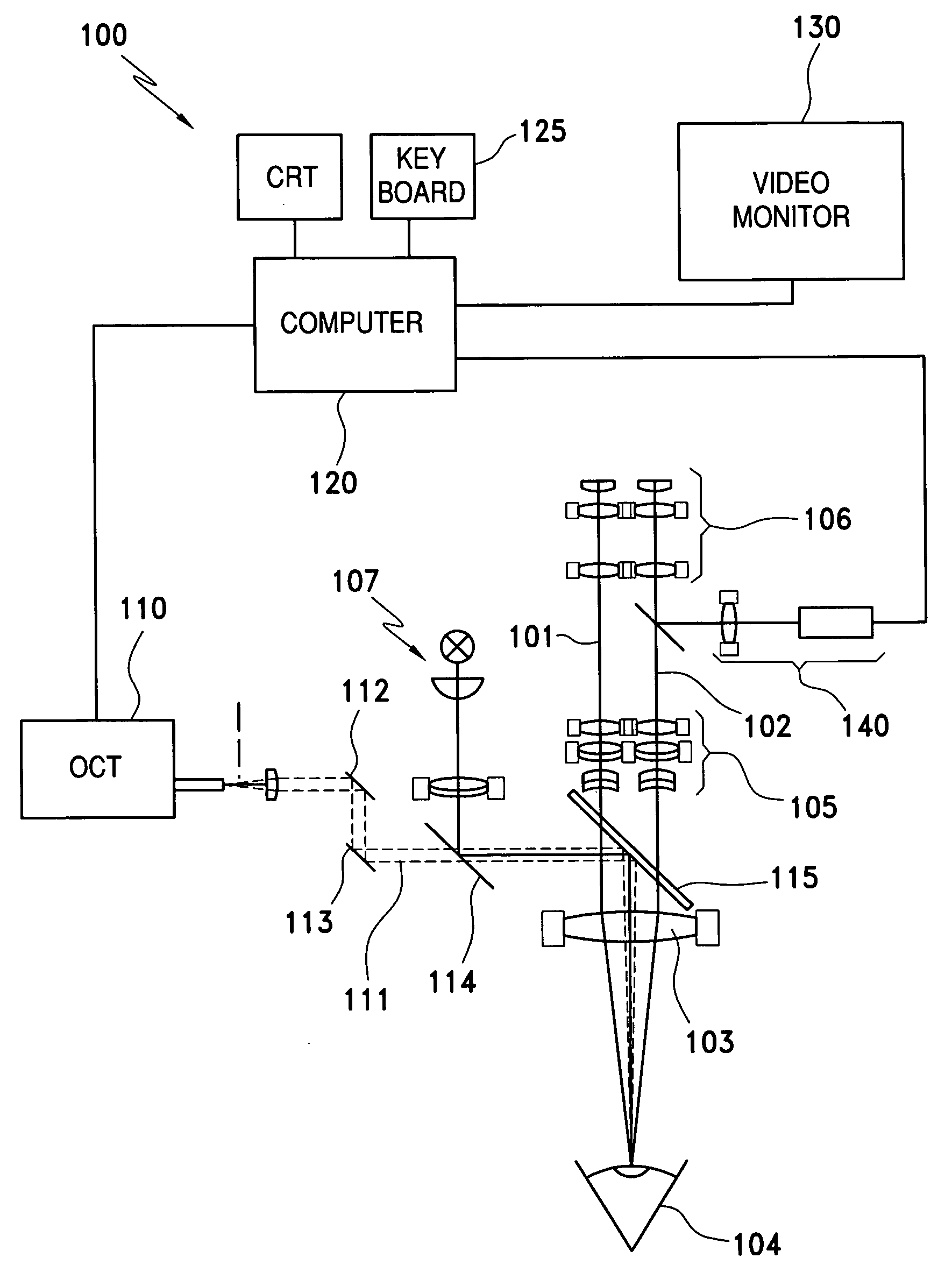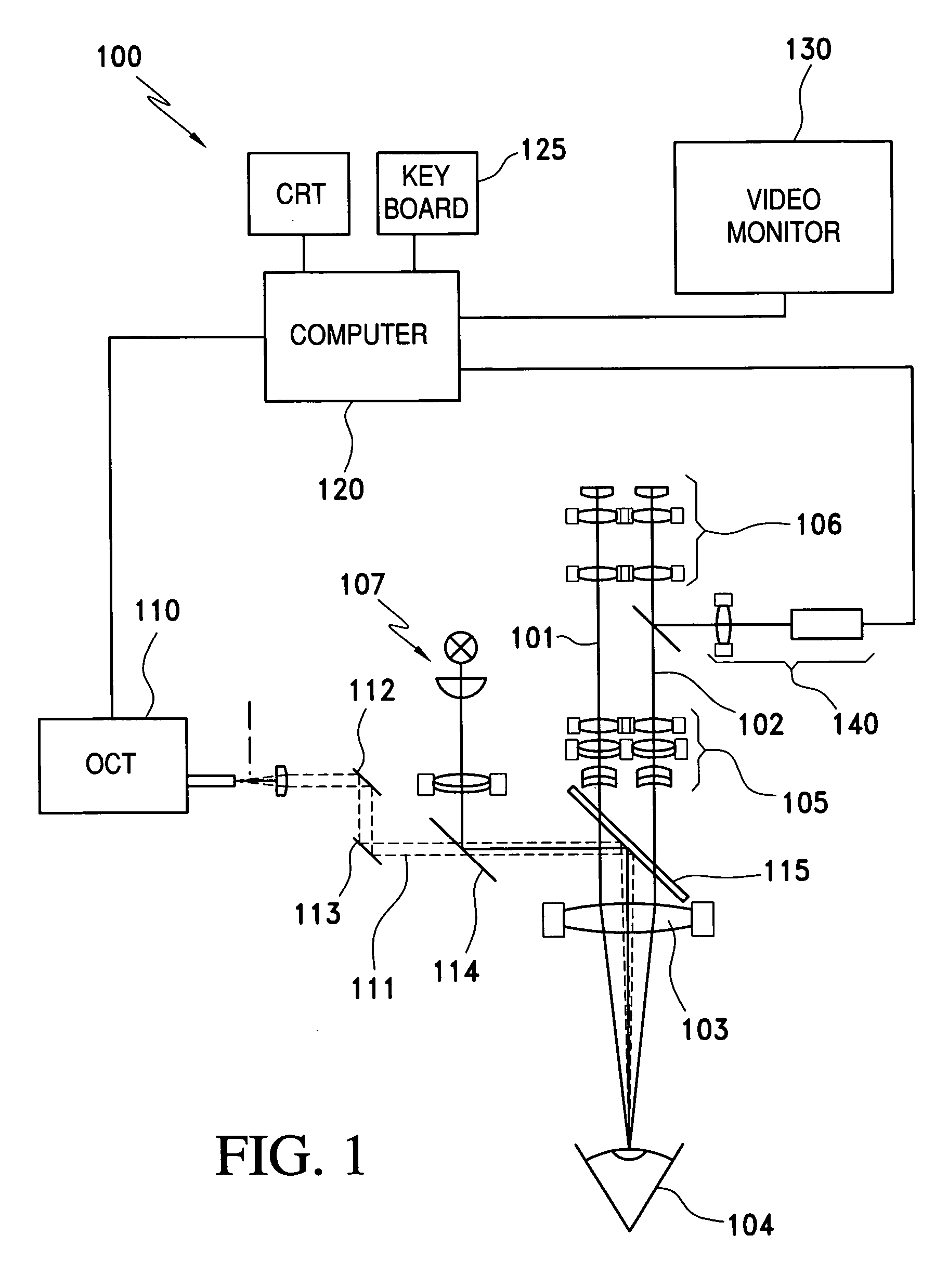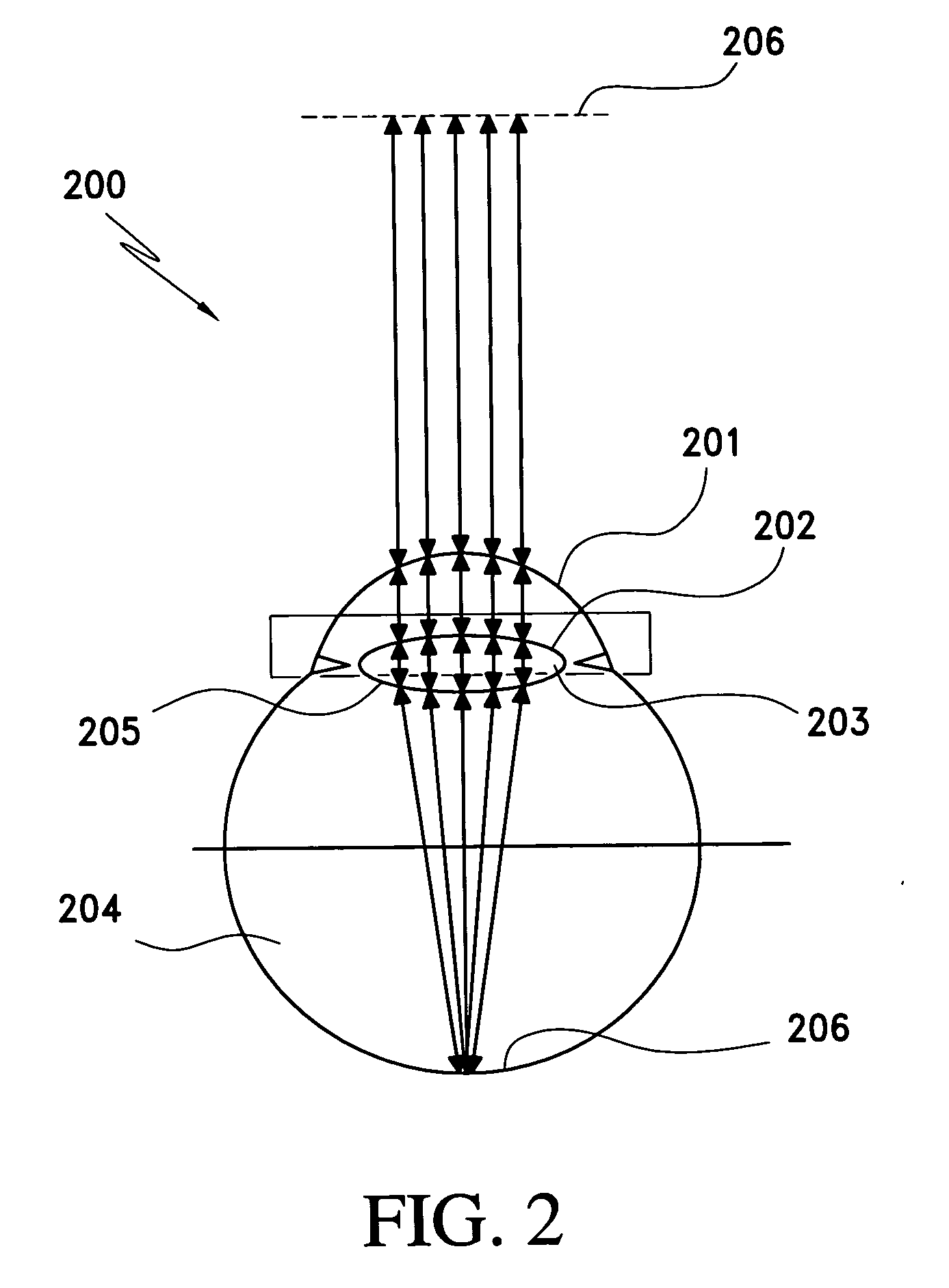Ophtalmologic surgical microscope having a measuring unit
a surgical microscope and measuring unit technology, applied in the field of surgical microscopes for ophthalmology, can solve the problems of inability to reliably determine the optical state of the eye, inability to achieve the optical effect, and possible partial amplification but also mutual weakening of the optical effect, so as to achieve substantial advantages for patients
- Summary
- Abstract
- Description
- Claims
- Application Information
AI Technical Summary
Benefits of technology
Problems solved by technology
Method used
Image
Examples
Embodiment Construction
[0030]The ophthalmologic surgical microscope 100 of FIG. 1 includes a stereoscopic illuminating beam path (101, 102) which makes possible the examination of a patient eye 104 through a microscope main objective 103. The ophthalmologic surgical microscope 100 further has a zoom system 105 and an ocular 106. The surgical microscope 100 includes an illuminating system 107 which makes available illuminating light for the patient eye 104 through the microscope main objective 103.
[0031]As a measuring device for determining optical characteristic variables of the patient eye 104, the ophthalmologic surgical microscope 100 has a coherence interferometer in the form of an OCT-system 110. The OCT-system 110 provides a scanning light beam 111 of short coherent light which is guided to the patient eye 104 via displaceable scan mirrors (112, 113) and beam splitters (114, 115) through the microscope main objective 103. The light of the scanning light beam 111, which is scattered at the patient ey...
PUM
 Login to View More
Login to View More Abstract
Description
Claims
Application Information
 Login to View More
Login to View More - R&D
- Intellectual Property
- Life Sciences
- Materials
- Tech Scout
- Unparalleled Data Quality
- Higher Quality Content
- 60% Fewer Hallucinations
Browse by: Latest US Patents, China's latest patents, Technical Efficacy Thesaurus, Application Domain, Technology Topic, Popular Technical Reports.
© 2025 PatSnap. All rights reserved.Legal|Privacy policy|Modern Slavery Act Transparency Statement|Sitemap|About US| Contact US: help@patsnap.com



